Related Research Articles

David O. Selznick, born as David Selznick was an American film producer, screenwriter and film studio executive who produced Gone with the Wind (1939) and Rebecca (1940), both of which earned him an Academy Award for Best Picture. He also won the Irving Thalberg Award at the 12th Academy Awards, Hollywood's top honor for a producer, in recognition of his shepherding Gone with the Wind through a long and troubled production and into a record-breaking blockbuster.

Douglas Elton Fairbanks Jr. was an American actor, producer, and decorated naval officer of World War II. He is best-known for starring in such films as The Prisoner of Zenda (1937), Gunga Din (1939), and The Corsican Brothers (1941). The son of Douglas Fairbanks and stepson of Mary Pickford, his first marriage was to actress Joan Crawford.

Phyllis Virginia "Bebe" Daniels was an American actress, singer, dancer, writer, and producer.

Edward Dmytryk was a Canadian-born American film director and editor. He was known for his 1940s noir films and received an Oscar nomination for Best Director for Crossfire (1947). In 1947, he was named as one of the Hollywood Ten, a group of blacklisted film industry professionals who refused to testify to the House Un-American Activities Committee (HUAC) in their investigations during the McCarthy-era Red Scare. They all served time in prison for contempt of Congress. In 1951, however, Dmytryk testified to the HUAC and named individuals, including Arnold Manoff, whose careers were then destroyed for many years, to rehabilitate his own career. First hired again by independent producer Stanley Kramer in 1952, Dmytryk is likely best known for directing The Caine Mutiny (1954), a critical and commercial success. The second-highest-grossing film of the year, it was nominated for Best Picture and several other awards at the 1955 Oscars. Dmytryk was nominated for a Directors Guild Award for Outstanding Directorial Achievement in Motion Pictures.
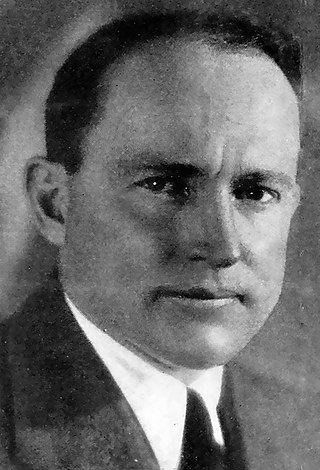
Merian Caldwell Cooper was an American filmmaker, actor, and producer, as well as a former aviator who served as an officer in the United States Air Force and Polish Air Force. In film, his most famous work was the 1933 movie King Kong, and he is credited as co-inventor of the Cinerama film projection process. He was awarded an honorary Oscar for lifetime achievement in 1952 and received a star on the Hollywood Walk of Fame in 1960. Before entering the movie business, Cooper had a distinguished career as the founder of the Kościuszko Squadron during the Polish–Soviet War and was a Soviet prisoner of war for a time. He got his start in with film as part of the Explorers Club, traveling the world and documenting adventures. He was a member of the board of directors of Pan American Airways, but his love of film took priority. During his film career, he worked for companies such as Pioneer Pictures, RKO Pictures, and Metro-Goldwyn-Mayer. In 1925, he and Ernest B. Schoedsack went to Iran and made Grass: A Nation's Battle for Life, a documentary about the Bakhtiari people.

Clara Lou "Ann" Sheridan was an American actress and singer. She is best known for her roles in the films San Quentin (1937) with Humphrey Bogart, Angels with Dirty Faces (1938) with James Cagney and Bogart, They Drive by Night (1940) with George Raft and Bogart, City for Conquest (1940) with Cagney and Elia Kazan, The Man Who Came to Dinner (1942) with Bette Davis, Kings Row (1942) with Ronald Reagan, Nora Prentiss (1947), and I Was a Male War Bride (1949) with Cary Grant.
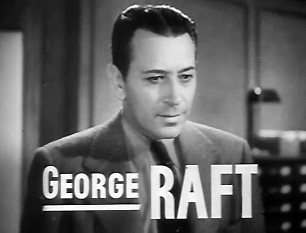
George Raft was an American film actor and dancer identified with portrayals of gangsters in crime melodramas of the 1930s and 1940s. A stylish leading man in dozens of movies, Raft is remembered for his gangster roles in Quick Millions (1931) with Spencer Tracy, Scarface (1932) with Paul Muni, Each Dawn I Die (1939) with James Cagney, Invisible Stripes (1939) with Humphrey Bogart, and Billy Wilder's comedy Some Like It Hot (1959) with Marilyn Monroe and Jack Lemmon; and as a dancer in Bolero (1934) with Carole Lombard and a truck driver in They Drive by Night (1940) with Ann Sheridan, Ida Lupino and Bogart.

Robert Bushnell Ryan was an American actor and activist. Known for his portrayals of hardened cops and ruthless villains, Ryan performed for over three decades. He was nominated for the Academy Award for Best Supporting Actor for his role in the film noir drama Crossfire (1947).

The Mercury Theatre was an independent repertory theatre company founded in New York City in 1937 by Orson Welles and producer John Houseman. The company produced theatrical presentations, radio programs and motion pictures. The Mercury also released promptbooks and phonographic recordings of four Shakespeare works for use in schools.
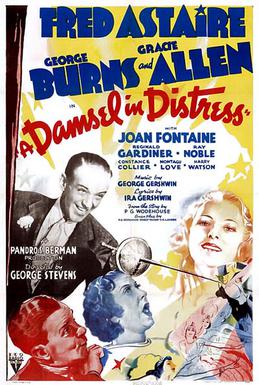
A Damsel in Distress is a 1937 American English-themed Hollywood musical comedy film starring Fred Astaire, George Burns, Gracie Allen and Joan Fontaine. Loosely based upon P.G. Wodehouse's 1919 novel of the same name, and the 1928 stage play written by Wodehouse and Ian Hay, it has music and lyrics by George and Ira Gershwin, and was directed by George Stevens, the second Astaire musical directed by Stevens; the first was Swing Time.

Leon Errol was an Australian-American comedian and actor in the United States, popular in the first half of the 20th century for his appearances in vaudeville, on Broadway, and in films.
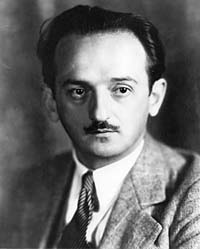
Slavoljub "Slavko" Vorkapić, known in English as Slavko Vorkapich, was a Serbian-born Hollywood montagist, an independent cinematic artist, chair of USC School of Cinematic Arts, chair of the Belgrade Film and Theatre Academy, painter, and illustrator. He was a prominent figure of modern cinematography and motion picture film art during the early and mid-20th century and was a cinema theorist and lecturer.
Joseph Ignatius Breen was an American film censor with the Motion Picture Producers and Distributors of America who applied the Hays Code to film production.

The era of American film production from the early sound era to the enforcement of the Hays Code in 1934 is denoted as Pre-Code Hollywood. The era contained violence and crime in pictures which would not be seen again until decades later. Although the Hays office had specifically recommended removing profanity, the drug trade, and prostitution from pictures, it had never officially recommended against depictions of violence in any form in the 1920s. State censor boards, however, created their own guidelines, and New York in particular developed a list of violent material which had to be removed for a picture to be shown in the state. Two main types of crime films were released during the period: the gangster picture and the prison film.

RKO Radio Pictures Inc., commonly known as RKO Pictures or simply RKO, was an American film production and distribution company, one of the "Big Five" film studios of Hollywood's Golden Age. The business was formed after the Keith-Albee-Orpheum theater chain and Joseph P. Kennedy's Film Booking Offices of America studio were brought together under the control of the Radio Corporation of America (RCA) in October 1928. RCA executive David Sarnoff engineered the merger to create a market for the company's sound-on-film technology, RCA Photophone, and in early 1929 production began under the RKO name. Two years later, another Kennedy concern, the Pathé studio, was folded into the operation. By the mid-1940s, RKO was controlled by investor Floyd Odlum.
The Cappy Barra Harmonica Band was an American harmonica ensemble — originally a trio, then a quartet, then two groups — that played big band arrangements. Cappy Barra flourished from 1935 to 1945.
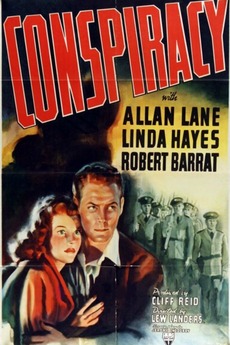
Conspiracy is a 1939 American spy drama film directed by Lew Landers, from a screenplay by Jerome Chodorov, based on the story, "Salute to Hate", by John McCarthy and Faith Thomas. The film stars Allan Lane, Linda Hayes, and Robert Barrat, and was produced and distributed by RKO Radio Pictures, who premiered the film in New York City on August 23, 1939, with a general release on September 1.
Lee Marcus, also known as Lee S. Marcus, was an American film producer of the 1930s and 1940s. During his fifteen-year career he produced over 85 films, most of them between 1934 and 1941 while he was at RKO Studios. Prior to his production career, Marcus worked for FBO and then RKO as a sales executive, reaching the level of vice president in both organizations. At RKO, he was head of production of the studio's b-films during the late 1930s and the beginning of the 1940s. He was also responsible for producing what many consider to be the first film noir, 1940's Stranger on the Third Floor.
Samuel Donald Hartman was an American screenwriter and director and former production head of Paramount Pictures. He and Stephen Morehouse Avery were nominated for the Academy Award for Best Story for The Gay Deception (1935). He was also nominated with Frank Butler for the Academy Award for Best Original Screenplay for Road to Morocco in 1942.
References
General references
- Thomas Patrick Doherty, Pre-Code Hollywood: Sex, Immorality, and Insurrection in American Cinema, 1930-1934 pg. 205 (News on Screen), Columbia University Press (1999) OCLC 40660169 ISBN 0-231-11094-4 ISBN 9780231110945 ISBN 0-231-11095-2 ISBN 9780231110952
Inline citations
- ↑ Ineffective Methods', The Times-Picayune, col. 2, pg. 8, January 28, 1939
- ↑ W. Ward Marsh (1893-1971), One Moment, Please, The Plain Dealer, pps. 9 & 13, January 22, 1933
- ↑ The Exhibitor, pg. 21, May 15, 1934
- ↑ Motion Picture Herald, pg. 37, February 3, 1934
- ↑ The Hollywood Reporter, pg. 3, September 1939